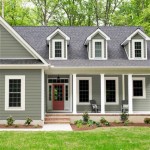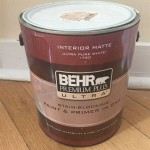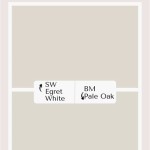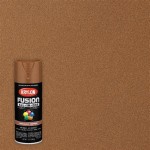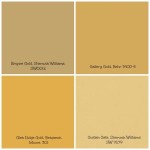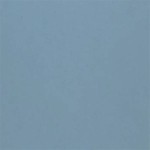What Colour To Paint Timber Fence Panels
Painting timber fence panels is an undertaking that allows for both aesthetic enhancement and protective maintenance. The decision of what colour to paint a timber fence panel requires consideration of several factors, including the architectural style of the property, the surrounding landscape, personal preferences, and the practical implications of different shades on the wood itself. The selection process should involve a careful evaluation of available options and their potential impact on both the visual appeal and longevity of the fence.
The appearance of a property is often substantially influenced by the colour of its boundaries. A well-chosen colour can complement the house, integrate smoothly with the garden, and even influence the perceived size and openness of the outdoor space. Conversely, a poorly selected colour can detract from the overall aesthetic and create an undesirable visual contrast. Therefore, thoughtful planning is essential for achieving a harmonious and pleasing outcome.
Beyond aesthetics, the colour of the paint can also play a role in the protection of the timber. Darker colours, for example, tend to absorb more heat, potentially leading to increased expansion and contraction of the wood, which can accelerate wear and tear. Lighter colours, on the other hand, reflect sunlight and can help keep the wood cooler, thus mitigating these effects. Understanding these physical properties is crucial for making an informed decision that balances visual appeal with practical considerations.
The existing colours within the landscape are a significant factor to consider. The colour of the house’s exterior, the materials used in the garden, and the natural colours of the plants all contribute to the overall visual environment. The fence colour should ideally harmonize with these existing elements, creating a cohesive and balanced visual effect. A contrasting colour might be used to create a statement feature, but this approach requires careful planning to ensure that it does not clash with the surroundings.
Considering the Architectural Style
The architectural style of the property often dictates the colour palette that is most appropriate for the fence. A traditional Victorian house, for example, might be best complemented by a classic white or cream fence, while a modern minimalist house might suit a grey or black fence. Matching the fence colour to the architectural style can enhance the overall aesthetic and create a sense of visual harmony.
For a country-style property, natural wood stains or muted earth tones might be the most suitable choices. These colours blend seamlessly with the surrounding landscape and create a rustic, organic feel. Conversely, for a contemporary property, bolder colours or sleek, minimalist designs might be more appropriate. The key is to choose a colour that complements the overall aesthetic and enhances the architectural features of the house.
It is also important to consider the colours of other exterior elements of the house, such as the trim, doors, and window frames. The fence colour should ideally coordinate with these elements, creating a cohesive and unified look. Consult with a professional designer or colour consultant to explore different colour combinations and ensure that the final result is aesthetically pleasing and harmonious.
Ultimately, the choice of fence colour should be a reflection of the property's architectural style and the homeowner's personal taste. However, it must be balanced with practical considerations and a careful understanding of the surrounding environment. By taking all of these factors into account, it's possible to select a colour that enhances the beauty and value of the property.
Evaluating Practical Implications
The practical implications of different colours extend beyond mere aesthetics. Dark colours, while potentially stylish, absorb more solar radiation, leading to higher temperatures in the wood. This heat absorption can accelerate the degradation process, causing the wood to warp, crack, and fade more quickly. In contrast, lighter colours reflect sunlight, helping to keep the wood cooler and prolong its lifespan.
Another practical consideration is the visibility of dirt and grime. Lighter colours tend to show dirt more readily, requiring more frequent cleaning and maintenance. Darker colours, on the other hand, can conceal dirt and grime, but they may also fade more quickly under prolonged exposure to sunlight. The choice between light and dark colours should therefore be based on a careful assessment of the local climate, the level of exposure to sunlight, and the homeowner's willingness to maintain the fence regularly.
The type of paint used is also a crucial factor. High-quality paints with UV protection can help mitigate the effects of sunlight, regardless of the colour chosen. Paints with mildew resistance can also be beneficial, especially in humid climates. It is important to select a paint that is specifically designed for exterior use and is formulated to withstand the rigours of outdoor weather conditions.
Furthermore, the preparation of the wood before painting is essential for ensuring a long-lasting finish. The wood should be thoroughly cleaned and sanded to remove any loose paint, dirt, or debris. A primer should then be applied to create a smooth, even surface for the paint to adhere to. Taking the time to properly prepare the wood will significantly improve the durability and appearance of the painted fence.
Exploring Colour Options and Trends
The range of colours available for painting timber fence panels is vast, offering endless possibilities for customization and personalization. Classic white remains a popular choice for its timeless appeal and its ability to brighten up any outdoor space. White fences create a clean, crisp look and complement a wide range of architectural styles.
Neutral tones, such as grey, beige, and brown, are also increasingly popular choices. These colours offer a more subtle and sophisticated look, blending seamlessly with the surrounding landscape and creating a sense of harmony. Grey fences, in particular, have become a popular trend in recent years, offering a modern and versatile aesthetic that complements both traditional and contemporary homes.
For those looking to make a bolder statement, darker colours such as black, navy blue, and dark green can be effective choices. These colours create a dramatic and sophisticated look, adding depth and visual interest to the outdoor space. However, it is important to use these colours judiciously, as they can also make the space feel smaller and more enclosed.
Natural wood stains are another option to consider. Stains allow the natural grain of the wood to show through, creating a rustic and organic look. Stains are available in a variety of shades, from light honey tones to dark mahogany hues, offering flexibility in achieving the desired aesthetic. Stains also tend to be more durable than paints, as they penetrate the wood and provide better protection against the elements.
Ultimately, the choice of colour depends on a variety of factors, including personal preferences, architectural style, and the surrounding landscape. It is important to carefully consider all of these factors before making a final decision. Consultation with a professional designer or colour consultant can be invaluable in helping to explore different options and choose a colour that enhances the beauty and value of the property.
In conclusion, selecting the right colour to paint timber fence panels is a multifaceted decision that requires careful consideration of aesthetics, practicalities, and personal preferences. A well-chosen colour can enhance the beauty of the property, protect the wood from the elements, and create a harmonious and inviting outdoor space. By taking the time to evaluate all of the relevant factors, it is possible to select a colour that will provide years of enjoyment and satisfaction.

Fence Painting Ideas That Will Make The Difference

Fence Painting Ideas That Will Make The Difference

Do S And Don Ts For Choosing The Right Fence Colour Maria Killam

27 Garden Fence Paint Ideas

Do S And Don Ts For Choosing The Right Fence Colour Maria Killam

Which Fence Paint Is Best Top 5 Paints

Do S And Don Ts For Choosing The Right Fence Colour Maria Killam

Top 10 Wonderful Timber Fence Colors For 2025 Pentagon

14 Best Backyard Fence Color Ideas For Stain Or Paint

Top 10 Wonderful Timber Fence Colors For 2025 Pentagon
Related Posts

